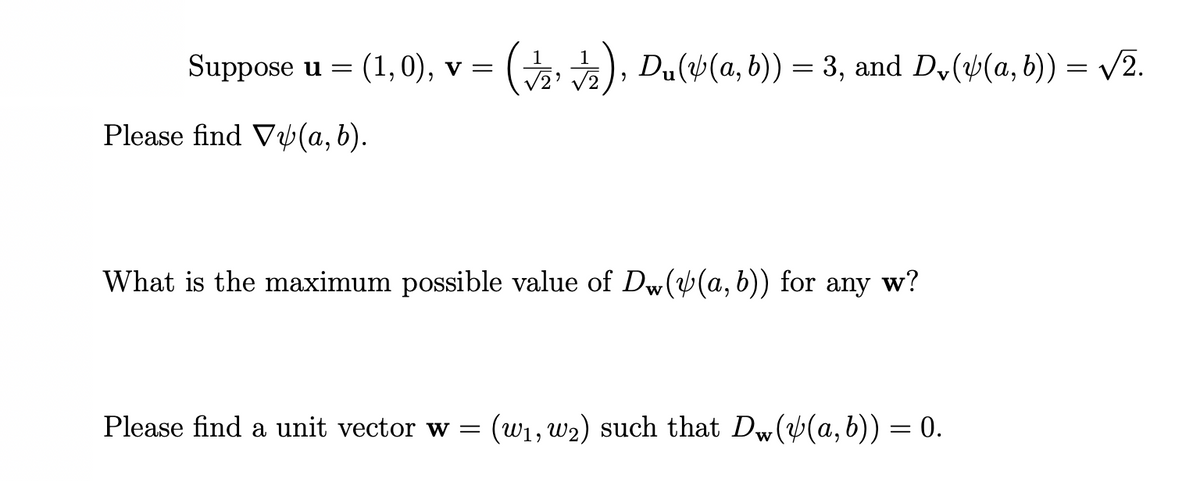Suppose u = (1,0), v = ( ), Du((a, 6)) = 3, and D«(»(a, b)) = /2. Please find Vy(a, b). What is the maximum possible value of Dw((a, b)) for any w? Please find a unit vector w = (w1, w2) such that Dw(4(a,b)) = 0.
Suppose u = (1,0), v = ( ), Du((a, 6)) = 3, and D«(»(a, b)) = /2. Please find Vy(a, b). What is the maximum possible value of Dw((a, b)) for any w? Please find a unit vector w = (w1, w2) such that Dw(4(a,b)) = 0.
Elementary Linear Algebra (MindTap Course List)
8th Edition
ISBN:9781305658004
Author:Ron Larson
Publisher:Ron Larson
Chapter5: Inner Product Spaces
Section5.3: Orthonormal Bases:gram-schmidt Process
Problem 71E
Related questions
Question

Transcribed Image Text:Suppose u = (1, 0), v = (), Du(4(a, b)) = 3, and Dv(4(a, b)) = /2.
Please find Vy(a, b).
What is the maximum possible value of Dw((a,b)) for any w?
Please find a unit vector w =
(w1, w2) such that Dw((a, b)) = 0.
Expert Solution
This question has been solved!
Explore an expertly crafted, step-by-step solution for a thorough understanding of key concepts.
Step by step
Solved in 2 steps with 2 images

Recommended textbooks for you

Elementary Linear Algebra (MindTap Course List)
Algebra
ISBN:
9781305658004
Author:
Ron Larson
Publisher:
Cengage Learning

Linear Algebra: A Modern Introduction
Algebra
ISBN:
9781285463247
Author:
David Poole
Publisher:
Cengage Learning

Algebra & Trigonometry with Analytic Geometry
Algebra
ISBN:
9781133382119
Author:
Swokowski
Publisher:
Cengage

Elementary Linear Algebra (MindTap Course List)
Algebra
ISBN:
9781305658004
Author:
Ron Larson
Publisher:
Cengage Learning

Linear Algebra: A Modern Introduction
Algebra
ISBN:
9781285463247
Author:
David Poole
Publisher:
Cengage Learning

Algebra & Trigonometry with Analytic Geometry
Algebra
ISBN:
9781133382119
Author:
Swokowski
Publisher:
Cengage